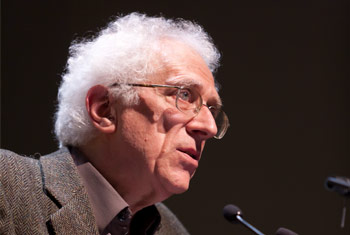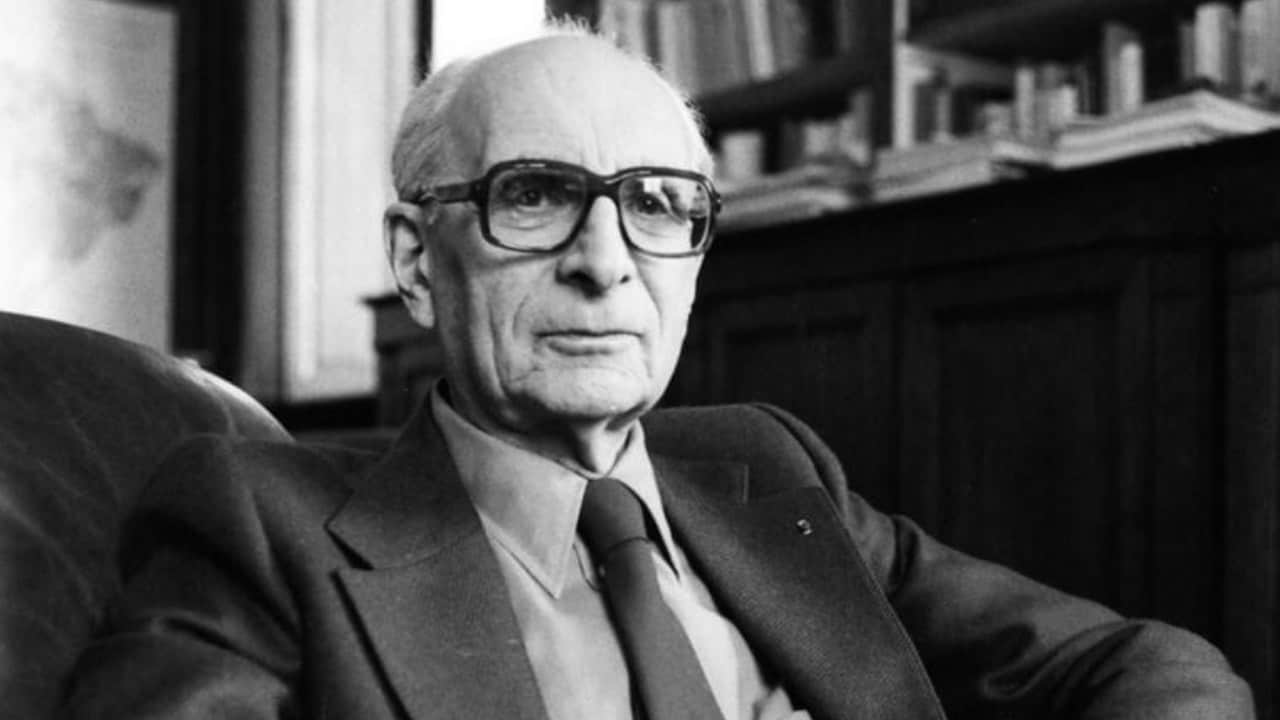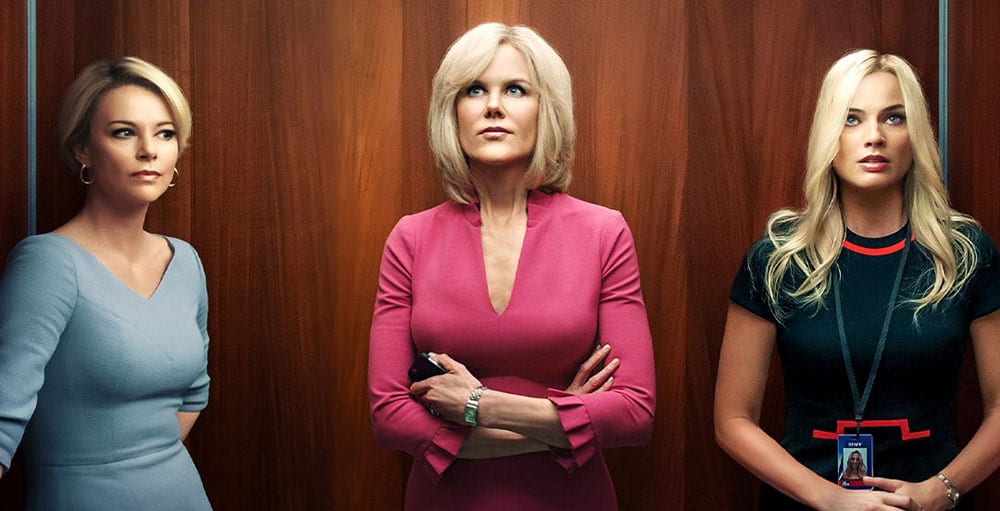| CONCEPT | strongly agree | agree | neutral | agree | strongly agree | OPPOSITE CONCEPT |
| MALE |  | FEMALE | ||||
| WHITE |  | BLACK | ||||
| RICH |  | POOR | ||||
| STRAIGHT |  | GAY | ||||
| URBAN |  | RURAL | ||||
| MATURE |  | CHILDISH | ||||
| EDUCATED |  | UNEDUCATED | ||||
| SUPPORTING OF GOVERNMENT |  | CRITICAL OF GOVERNMENT | ||||
| HAPPY |  | SAD | ||||
| OBEDIENT |  | DISOBEDIENT | ||||
| YOUNG |  | OLD |
All posts by Thomas Du Feu
Filters
Postcolonial Theory
PAUL GILROY
Paul Gilroy, an English sociologist and cultural studies scholar, explores the construction of racial ‘otherness’ as an underlying presence within print media communication during the 1970s and 80s, and argues that criminalised representations of black males regularly pour scorn on the black community.

When it comes to the 1990s, Gilroy diagnoses the existence of a media induced ‘post-colonial melancholia’ as a representational response to the UK’s declining global position in the late 1990s – a decline as a result of the loss of the post-war Empire (which the media quietens down with stories infused with Union Jack waving nostalgia. For Gilroy, those stories are also underscored by racial misrepresentations and the amplification of multicultural disharmony in the UK.
Youth Culture as Political Protest
RESISTANCE AND POLITICAL PROTEST
Common thoughts about political protest revolve around: attempts to change laws or legislation; organised political movements; public protests; petitions; and marches. However, political protest can be seen in terms of cultural resistance and everyday people.
Cultural resistance is looked at because overt political protest is uncommon and when it occurs it often results in backlash. Even if overt political protest results in changes in legislation, it won’t necessarily change public opinion. Culture is what influences people’s hearts, minds, and opinions. This is the site of popular change.
ANTONIO GRAMSCI

Italian philosopher, Antonio Gramsci, is best known for his theory of cultural hegemony, which describes how the ruling capitalist class use cultural institutions to maintain power in capitalist societies.
| Term | Definition |
| Hegemonic | dominant, ruling-class, power-holders |
| Hegemonic Culture | the dominant culture |
| Cultural Hegemony | power, rule, or domination maintained by ideological and cultural means |
| Ideology | beliefs, assumptions and values |
SUBCULTURAL THEORY
Subculture is a working-class youth culture that is: unified by shared tastes in style, music and ideology; a solution to collectively experienced problems; and a form of resistance to cultural hegemony.
In the 1970s, a group of cultural theorists in Birmingham applied Gramsci’s theories to post-war British working-class youth culture. They looked at working class cultures like the teddy-boys, mods, skinheads, and punks – subcultures unified by shared tastes in fashion, music and ideology. They argued that the formation of subcultures offered young working-class people a solution to the problems they were collectively experiencing in society. The Birmingham School’s subcultural theory validated the study of pop-culture, which was previously considered superficial, however, they merely focused on white working-class masculinity and ignored ethnic minority, female, and queer youth cultures.
MARGARET THATCHER

The Prime Minister (from 1979-1990) and a militant campaigner for middle-class interests with a hardline attitude towards immigration, Margaret Thatcher, introduced a series of increasingly tough immigration procedures and excluded Asian people from entering Britain in the British Nationality Act of 1981.
“British national identity could be swamped by people with different culture”
“Firm immigration control for the future is essential if we are to achieve good community relations”
Media Posters 1 and 2
POSTER 1:

INSPIRATION FOR POSTER 1:

The dominant signifier is presented as a silhouette which foreshadows the dark things this character will do in the moving image.
POSTER 2:

INSPIRATION FOR POSTER 2:

Narrative
TZTEVAN TODOROV

Most stories are linear and are broken down into a beginning, middle, and end. The Bulgarian structuralist theorist, Tztevan Todorov, presents this idea as:
– Equilibrium (the story constructs a stable world at the outset of the narrative. Key characters are presented as part of that stability.)
– Disruption (oppositional forces – the actions of a villain, perhaps, or some kind of calamity – destabilise the story’s equilibrium. Lead protagonists attempt to repair the disruption caused.)
– New Equilibrium (disruption is repaired and stability restored. Importantly, the equilibrium achieved at the end of the story is different to that outlined at the start. The world is transformed.)
VLADIMIR PROPP

Todorov was hugely influenced by the Russian literary theorist, Vladimir Propp, and his highly influential 1929 book, Morphology Of The Folktale, in which Propp arrived at the conclusion that folk tales drew from a highly stable list of characters whose roles and narrative functions he defined:
– The Hero (Propp identifies two significant types of hero – the seeker hero, who relies more heavily on the donor to perform their quest, and the victim hero, who needs to overcome a weakness to complete their quest.)
– The Villain (fights or pursues the hero and must be defeated if the hero is to accomplish their quest.)
– The Princess and the Princess’s Father (the princess usually represents the reward of the hero’s quest, while the princess’s father often sets the hero difficult tasks to prevent them from marrying the princess.)
– The Donor (provides the hero with a magical agent that allows the hero to defeat the villain.)
– The Helper (usually accompanies the hero on their quest, saving them from the struggles encountered on their journey, helping them to overcome the difficult tasks encountered on their quest.)
– The Dispatcher (sends the hero on his or her quest, usually at the start of the story.)
– The False Hero (performs a largely villainous role, usurping the true hero’s position in the course of the story. The false hero is usually unmasked in the last act of a narrative.)
CLAUDE LEVI-STRAUSS

Claude Levi-Strauss, a French anthropologist and ethnologist, examined the structure and narratives of myths and legends from around the world, such as the tribal stories of the Amazonian rainforest or the ancient myths of Greece). He ventured out to uncover the hidden rules of storytelling, in order to diagnose the essential nature of human experience, and believed that common themes and tropes found in these stories would reveal essential truths about the way the human mind structures the world. He suggested that myths were used to deal with the contradictions in experience, to explain the apparently inexplicable, and to justify the inevitable.
SEYMOUR CHATMAN

The American film and literary critic, Seymour Chatman,
Kernels
Satellites
ROLAND BARTHES

Proairetic Code
Hermenuetic Code
Enigma Code
Key Words and Definitions
| KEY WORDS | DEFINITIONS |
| Cultural Industries | the notion of cultural industries generally includes textual, music, television, film production and publishing. |
| Production | the action of making or manufacturing from components or raw materials, or the process of being so manufactured. |
| Distribution | the methods by which media products are delivered to audiences, including the marketing campaign. |
| Exhibition / Consumption | the sum of information and entertainment media taken in by an individual or group. |
| Media Concentration | a process whereby progressively fewer individuals or organizations control increasing shares of the mass media. |
| Conglomerates | a company that owns numerous companies involved in mass media enterprises. |
| Globalisation | the process by which businesses or other organizations develop international influence or start operating on an international scale. |
| Cultural Imperialism | Cultural Imperialism Theory states that Western nations dominate the media around the world which in return has a powerful effect on Third World Cultures by imposing n them Western views and therefore destroying their native culture. |
| Vertical Integration | when a Media Company owns different businesses in the same chain of production and distribution. |
| Horizontal Integration | a Media Company’s Ownership of several businesses of the same value. A Media Company can own a Magazine, Radio, Newspaper, Television and Books. |
| Mergers | an acquisition in which one or more of the undertakings involved carries on a media business in the Page 2 State and one or more of the undertakings involved carries on a media business elsewhere. |
| Monopolies | concentrated control of major mass communications within a society. |
| Gatekeepers | is a process by which information is filtered to the public by the media. |
| Regulation | a rule or directive made and maintained by an authority. |
| Deregulation | the removal of regulations or restrictions, especially in a particular industry. |
| Free Market | an economic system in which prices are determined by unrestricted competition between privately owned businesses. |
| Commodification | the act or fact of turning something into an item that can be bought and sold. |
| Convergence | a phenomenon involving the interconnection of information and communications technologies, computer networks, and media content. |
| Diversity | it means understanding that each individual is unique, and recognizing our individual differences. |
| Innovation | the process of not just an “invention” of a new value for journalism, but also the process of implementing this new value in a market or a social setting to make it sustainable. |
David Hesmondhalgh
David Hesmondhalgh is the author of the book ‘The Cultural Industries’.
His work is about tracing the relationship with media work, media workers, and the media industries.
‘the individualising discourses of ‘talent’ and ‘celebrity’ and the promise of future fame or consecration, have special purchase in creative work, and are often instrumental in ensuring compliance with the sometimes invidious demands of managers, organisations and the industry‘
Hesmondhalgh states that the media industry is a ‘risky business’. The impossibility of predicting audience tastes combined with the high costs of production and the effects of mass competition means that the business of making commercially successful media is very difficult.
‘for every individual who succeeds, there are many who do not. For many, it will be the result of a perfectly reasonable personal decision that the commitment and determination required is not for them’
Murdoch

- Keith Rupert Murdoch was born on March 11, 1931.
- He was born in Melbourne, Australia.
- He went to Oxford University.
- He is worth $17.1 Billion.
- In 1953, his father dies, leaving him in control of the News Ltd. company in Adelaide, Australia, which he turned into a huge success.
- He was founder of News Corporation, Ltd. which has holdings in cable, film, television, internet, direct broadcast satellite television, sports, publishing and other fields.
- Murdoch’s media empire includes Fox News, Fox Sports, the Fox Network, The Wall Street Journal, and HarperCollins.
- Murdoch is credited for creating the modern tabloid encouraging his newspaper to publish human interest stories focused on controversy, crime, and scandals.
- In 1968, Murdoch entered the British newspaper market with his acquisition of the populist News of the World, followed in 1969 with the purchase of The Sun from IPC.
- Murdoch became a US Citizen in 1985 in order to be able to expand his market to US television broadcasting.
- In 1985 he acquired the Twentieth Century–Fox Film Corporation (later called 20th Century Fox)
- then consolidated both these ventures into a new company Fox Inc, which has since become a major broadcast television network in the United States.
- In Britain in 1989 Murdoch inaugurated Sky Television,
- The following year Murdoch sought to expand his presence in American television with the launch of Fox News, a news and political commentary channel that became highly influential.
- In July 2011, Murdoch, along with his youngest son James, provided testimony before a British parliamentary committee regarding phone hacking. In the UK, his media empire came under fire, as investigators probed reports of 2011 phone hacking. This was later known as ‘Leveson’, which came to the public eye after a young girl who was murdered had her phone hacked by reporters/journalists in order to make a story. claiming that he had been unaware of the hacking.
- On 15 July, Murdoch attended a private meeting in London with the family of Milly Dowler, where he personally apologized for the hacking of their murdered daughter’s voicemail by a company he owns. he apologized for the “serious wrongdoing” and titled it “Putting right what’s gone wrong”.
- May 2012 a parliamentary panel tasked with investigating the scandal released a highly critical report, which stated that Rupert “is not a fit person to exercise the stewardship of a major international company” and that he showed “willful blindness” concerning misconduct within his corporation
- In 2015 Murdoch was succeeded as CEO at 21st Century Fox by James.
- In 2017 he agreed to sell most of the holdings of 21st Century Fox to the Disney Company. Two years later the deal closed and was valued at about $71 billion. The hugely profitable Fox News and various other TV channels were excluded from the sale, and they became part of the newly formed Fox Corporation.
EXAM ESSAY
| Judith Butler describes gender as “an identity instituted through a stylized repetition of acts”. In other words, it is something learnt through repeated performance. How useful is this idea in understanding gender is represented in both the ‘Score’ and ‘Maybelline’ advertising campaigns? |
In this essay, I will be discussing representation in media. I believe that Judith Butler’s ideas about gender are very useful in understanding how gender is represented in both the ‘Score’ and ‘Maybelline’ advertising campaigns.
Judith Butler describes gender as “performative” and suggests that there can be no gender identity before gendered acts (daily practices, learned and performed based on cultural norms of femininity and masculinity), because the acts are constantly forming the identity and therefore nobody can be a gender before doing gendered acts. Butler argues that the dominance of heterosexuality representation in media maintains typical male and female identities as a social norm. This is harmful for individuals who “deviate” from gender norms and is harmful to those who participate in this heteronormative culture because it limits their capacity to empathize and create. She critiques the notion that gender exists inside the body and suggests that these gendered identities are realised through our desires, sexual contacts and physical expressions of love – they are not a fixed object and are created as a result of our behaviours. Similarly with Butler, Liesbet van Zoonen sees gender as dependent on social and historical context. She suggests that the meaning of gender is a “discursive struggle and negotiation, the outcome having far-reaching socio-cultural implications.”
None of these ideologies are associated with the ‘Score’ advert, which seems to be more connected with Laura Mulvey’s ‘male gaze’ theory – the idea of how typical, heterosexual men viewing media, sexualise and objectify women.
The ‘Score’ advert shows that if you buy their product, then you can attract lots of women. This is suggested in the strapline: “Get what you’ve always wanted” and the dominant signifier of a man surrounded by women. The costumes for the women are incredibly revealing and sexualising, and have connotations of voyeurism for heterosexual men. In the advert, the women at the back are gazing lustfully at the man – which insinuates that most women look at men wearing the product like this. Another woman, on the right, is looking proud, as though she is showing off the man and the final woman, on the left, is looking directly at the camera, which could connect the advert with the potential purchaser.
The ‘Score’ advert is an artefact from 1967, a period of slow transformation in western cultures with laws about and changing attitudes to gender roles, sexuality and the historical context of advertising techniques in society – something that this advert can be seen to overcome. Feminist critical thought was becoming much more prominent at this time, which later brought many changes including a greater acceptance of birth control, divorce, abortion and homosexuality.
This period is often termed as “second wave feminism” – set after the first wave of feminism, which was influenced by organisations such as: the British Women’s Suffrage Committee (1867), the International Council of Women (1888) and others who, in early part of the 20th Century, worked to get women the right to vote. The second wave passed many laws that helped women get more reproductive rights and equal pay in the work force. It also liberated women and changed their mindset. However, the second wave of feminism overlooked other aspects of diversity – their focus on sexism did not extend to include the consideration of intersectionality, resulting in a predominantly white woman’s movement.
Media is a loudspeaker that magnifies power relations, and it can either reinforce or expose those who have political and social power. Diversity in media matters because it brings attention to an otherwise underrepresented community and gives a voice to the otherwise voiceless. When a given minority or disadvantaged group is portrayed in the media in a positive light, stereotypes can be dismantled, and this is especially important for younger generations who are more directly exposed to this.
In his investigation into the fluidity of identity, David Gauntlett noted how the representation of gender in the media was beginning to break down the old binary definitions and was now offering a more diverse range of identities. Women, who were simply stereotyped as housewives and passive in the past, were now represented as empowered and assertive. Instead of the physical and combative masculine identity, men could now be seen as sensitive and introspective without any ridicule. In “That Boss Life”, Manny embodies the merging of masculinity and femininity. He wears typical masculine clothes, but his speech and actions are quite feminine and he is also confident in his identity to use mascara.
None of this diversification came into place until third wave feminism began in the early 1990s. It was a response to the generation gap between the feminist movement of the 1960s and ’70s – challenging and changing some of the definitions of femininity that grew out of that earlier period. In particular, the third wave sees women’s lives as intersectional (the realisation that everyone has their own unique experiences of discrimination and oppression and people must consider everything and anything that can marginalise people such as: gender, race and class).
Whilst ‘Score’ completely ignores third wave feminism ideologies by having an exclusive cast of white characters, ‘Maybelline’ follows these ideologies by including a black woman and a homosexual man – showing how as time moves on, diversity becomes more common.
Bombshell
FOX NEWS

The Fox News Channel, commonly known as Fox News, is an American multinational conservative cable news television channel based in New York City. It is owned by Fox News Media, which itself is owned by the Fox Corporation. Fox News provides service to 86 countries and overseas territories worldwide, with international broadcasts featuring Fox Extra segments during ad breaks.
ROGER AILES

Roger Ailes (May 15, 1940 – May 18, 2017) was an American television executive and media consultant. He was the chairman and CEO of Fox News, Fox Television Stations and 20th Television. He was a media consultant for Republican presidents Richard Nixon, Ronald Reagan, and George H. W. Bush, and for Rudy Giuliani’s first mayoral campaign. In July 2016, he resigned from Fox News after being accused of sexual harassment by several female Fox employees, including on-air personalities Gretchen Carlson and Megyn Kelly. Shortly afterward, he became an adviser to Donald Trump’s presidential campaign, in which he assisted with debate preparation.
SEXUAL HARASSMENT

Sexual harassment is a type of harassment involving the use of explicit or implicit sexual overtones, including the unwelcome and inappropriate promise of rewards in exchange for sexual favours. Sexual harassment includes a range of actions from verbal transgressions to sexual abuse or assault. Harassment can occur in many different social settings such as the workplace, the home, school, churches, etc. Harassers or victims may be of any sex or gender.
Sexual harassment by an employer is a form of illegal employment discrimination. For many businesses or organizations, preventing sexual harassment and defending employees from sexual harassment charges have become key goals of legal decision-making.
PLOT OF ‘BOMBSHELL’

After co-moderating the 2016 Republican debate, Megyn Kelly (Charlize Theron) faces numerous insults from Donald Trump, who is upset because she asked him about his offensive comments toward women. Under pressure from the network, and after receiving death threats and unwanted paparazzi attention, Kelly eventually reconciles with Trump.
Meanwhile, Gretchen Carlson (Nicole Kidman) is removed as co-anchor of the popular ‘Fox and Friends’ show, and is transferred to a less popular show. Inundated by sexist comments on and off the air, including by Roger Ailes (John Lithgow), Carlson meets with lawyers who explain that Carlson’s contract prevents her from suing the network, but she can sue Ailes personally.
On her first day on ‘The O’Reilly Factor’, Kayla Pospisil (Margot Robbie) meets co-worker Jess Carr (Kate McKinnon), and the two sleep together. The next day, Ailes begins sexually harassing Pospisil. Pospisil begins to tell Carr about what happened, but Carr says she cannot get involved.
Carlson is later fired, ostensibly for her on-air support of the federal assault weapons ban, and decides to sue Ailes. When the news breaks the next day, Ailes denies the allegations and Kelly admits to her core team that Ailes sexually harassed her when she started at Fox. In the following weeks, despite a number of other women voicing their public support against Ailes, Kelly conspicuously refuses to make a comment on Carlson’s accusations.
After more women accuse Ailes, Kelly starts to find other women at the network. Kelly visits Pospisil, and the two confide in each other. Kelly advises Pospisil to come forward, and after consulting with Carr, she does. Through her attorneys, Carlson later informs Ailes she has recorded conversations to support her claims, deliberately withholding them from Ailes’s lawyers in order to undermine his credibility. Defeated, Ailes is fired by Fox co-creator Rupert Murdoch (Malcolm McDowell). Ailes settles Carlson’s lawsuit for $20 million and an apology from Fox, but the agreement contains a non-disclosure agreement. Fox eventually paid the victims of sexual harassment $50 million, while paying Ailes and O’Reilly $65 million in severance.
